What to Consider When Choosing the Best Paper for Oil Pastels
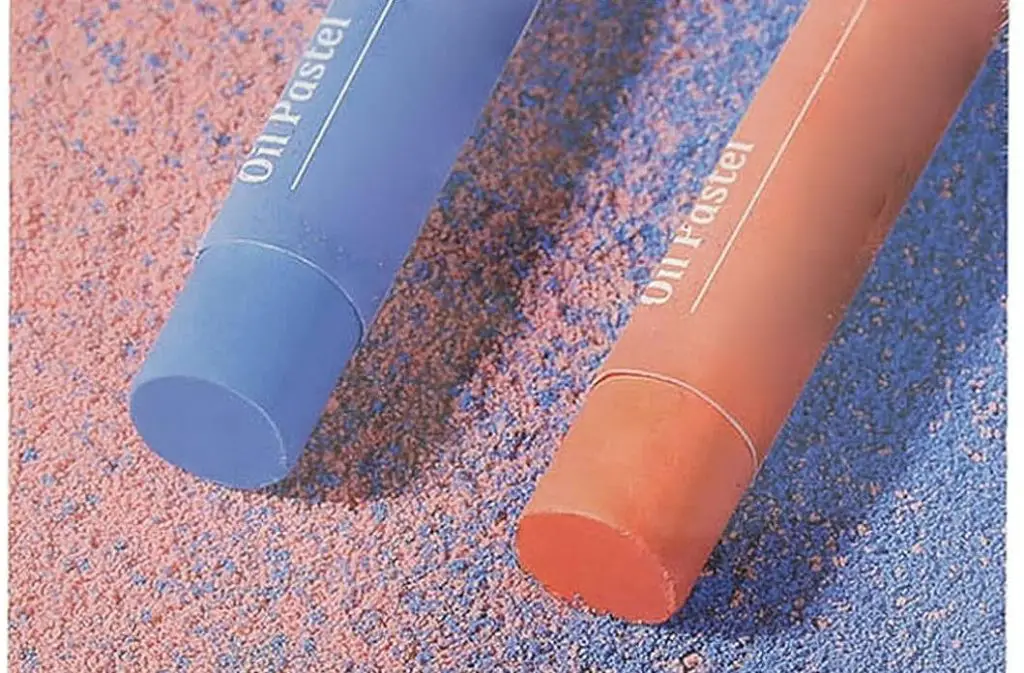
Are you tired of using the wrong paper for your oil pastel artwork? Look no further! We’ve compiled a list of the top 9 best papers for oil pastels that will take your artwork to the next level.
From budget-friendly options to professional-grade paper, these choices will provide an even tooth for applying oil pastels and hold up to multiple layers without buckling.
Get ready to easily create stunning artwork using our ultimate guide to the best paper for oil pastels.
Table of Contents
Different Types of Paper for Oil Pastels
Choosing the right paper for oil pastels can greatly affect the quality of your artwork. Various types of paper available are suitable for oil pastels, each with unique texture and characteristics.
1. Watercolor Paper
Watercolor paper is a popular choice for many oil pastel artists. Its rough texture allows for better adherence to the pastels and provides a grainy effect that enhances the artwork’s visual appeal.
The thickness of the paper is also a plus point, as it can handle multiple layers of pastels without bleeding through the other side. It is suitable for both beginners and professional artists.
2. Pastel Papers
As the name suggests, pastel paper is exclusively designed for pastel artwork, including oil pastels. The surface of the pastel paper is toothy, allowing the pastels to adhere to the paper better.
The paper’s texture varies from fine to coarse, and some pastel papers have a sanded surface that can hold many layers of pastel without smudging.
3. Sanded Pastel Paper
Sanded pastel paper is the same as pastel paper but with a rough surface that gives a unique texture to pastel artwork.
The texture of the paper allows for better blending and layering of pastel colors and provides a unique visual appeal to the artwork.
Sanded pastel paper is a favorite among professional artists and experienced painters.
4. Mixed Media Paper
Mixed media paper is versatile and can handle many mediums, including oil pastels.
The paper has a smooth surface that allows for easy blending and glazing techniques, making it suitable for beginners.
With mixed media paper, you can experiment by combining different mediums and techniques to create unique works of art.
With various types of paper available for oil pastels, it’s important to experiment with different types to find the one that suits you best.
Each type of paper has its unique texture and surface, providing a different effect on the artwork.
Our Top Picks for Best Paper for Oil Pastels
Two brands stand out when choosing the best paper for oil pastels: Sennelier and Strathmore. Both offer high-quality paper pads ideal for professional artists and beginners alike.
1. Sennelier Oil Color Pastel Pad
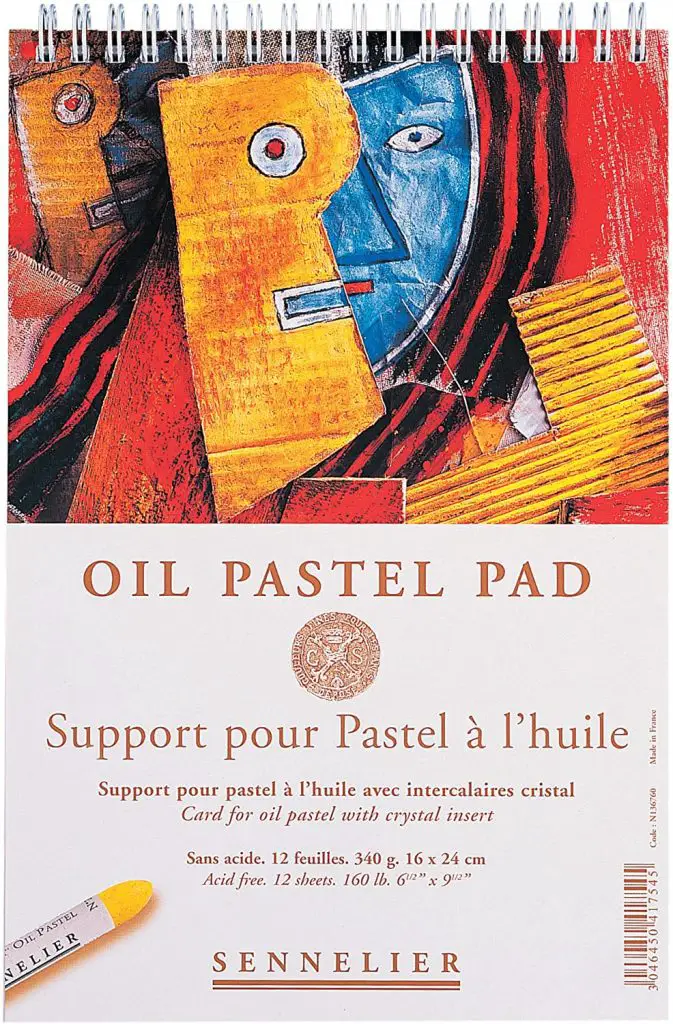
| Brand | Product Name | Description | Size Available |
|---|---|---|---|
| Sennelier | Oil Pastel Pad | Made with a heavyweight, textured paper to hold multiple layers of oil pastels. Suitable for oil sticks and oil pastels. | 9″ x 12″, 12″ x 16″, 16″ x 24″ |
2. Strathmore 400 Series Pastel Pad
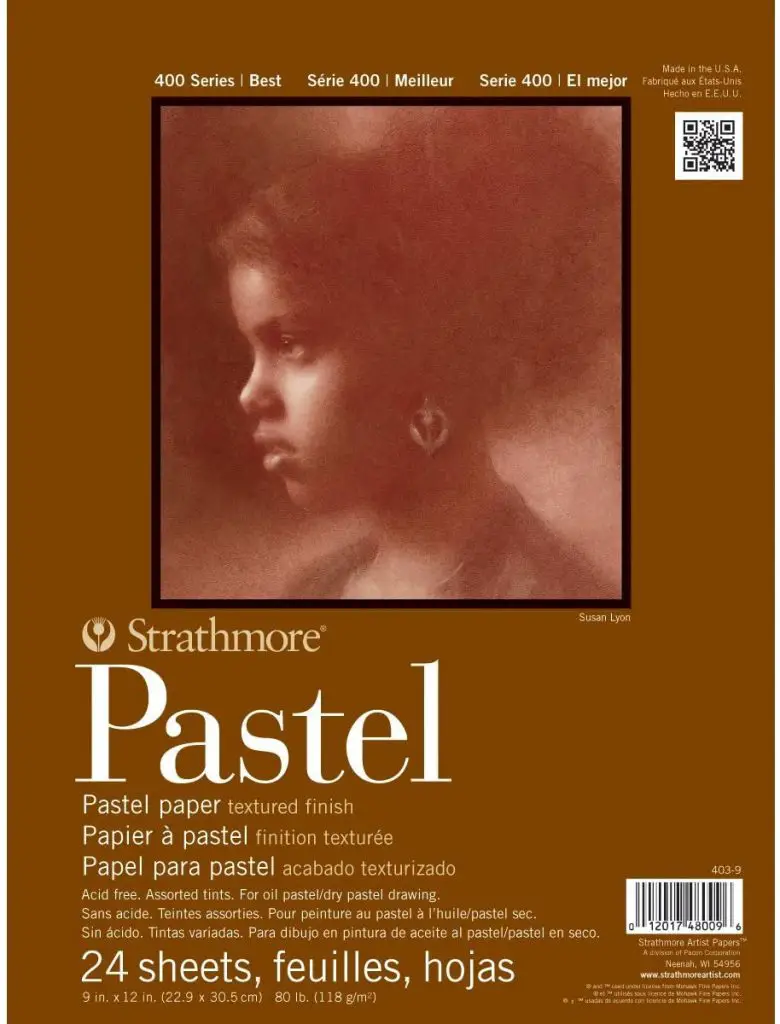
| Brand | Product Name | Description | Size Available |
|---|---|---|---|
| Strathmore | 400 Series Pastel Pad | Made with heavyweight, textured paper to hold multiple layers of oil pastels. Suitable for oil sticks and oil pastels. | 9″ x 12″, 12″ x 18″, 18″ x 24″ |
The Sennelier Oil Pastel Pad is popular among artists due to its high-quality paper and ability to handle multiple layers of oil pastels.
The paper’s texture adds depth and interest to oil pastel artwork. Available in three sizes, it is a versatile option for different oil pastel projects.
The Strathmore 400 Series Pastel Pad is another top pick. Its micro-perforated paper is resistant to smudging and holds multiple layers of pastels.
This pad is suitable for soft pastels, charcoal, and colored pencils, making it a versatile option for mixed-media projects.
Both of these paper pads are acid-free, ensuring the longevity of your artwork.
The Benefits of Textured Paper for Oil Pastels
Textured paper is one of the most preferred choices for artists who work with oil pastels. The rough surface of the paper can hold the pastel pigments well, allowing artists to create bold and vibrant artwork.
One of the main benefits of using textured paper for oil pastels is the ability to create depth in the artwork. The paper’s grainy texture helps add dimension to the artwork, making it more interesting and dynamic.
Additionally, textured paper allows artists to add texture to their artwork. By layering multiple colors of pastel on top of each other, artists can create intricate and textured effects that are impossible to achieve on smooth paper.
Another benefit of using textured paper for oil pastels is that it can enhance the vibrancy of colors. Because the paper holds on to the pastel pigments, the colors appear brighter and more intense.
When selecting textured paper for oil pastels, it’s important to consider the texture that will work best for your artwork.
Some brands offer papers with a fine tooth, while others have a rougher grain. Experiment with different types of textured paper to find the right fit for your art style.
Using Black Paper for Oil Pastels
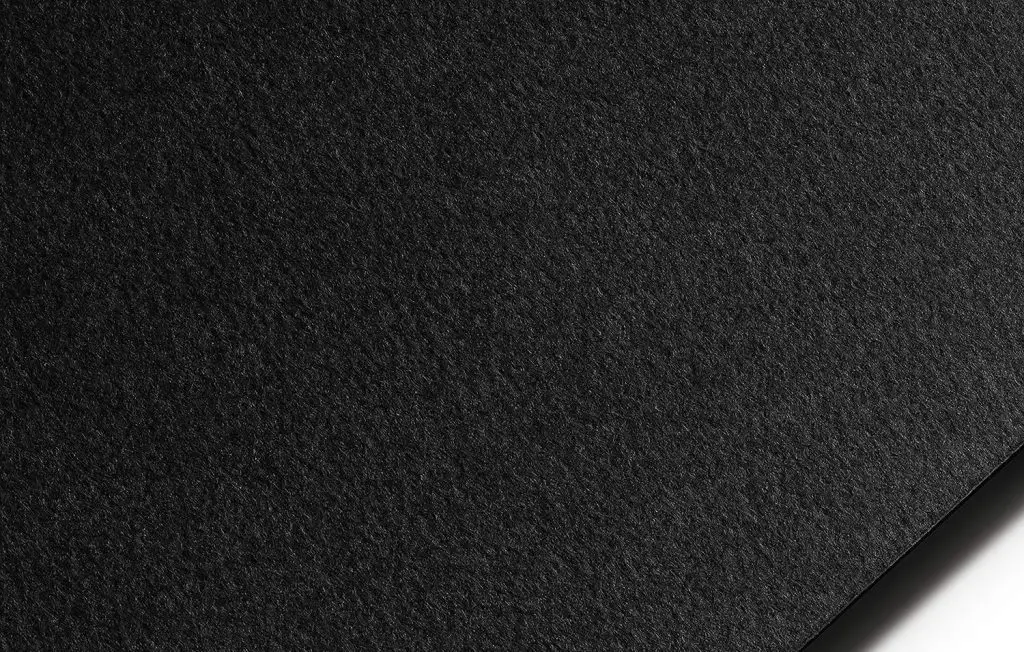
One unique paper option for oil pastels is black paper. This type of paper can be especially effective when using high-quality oil pastels.
The darkness of the paper enhances the richness and intensity of colors, creating a bold and striking effect in the artwork.
When choosing black paper for oil pastels, it’s important to consider the texture and weight of the paper.
A heavier-weight paper is recommended to avoid buckling or warping from the heavy application of oil pastels. A paper with a slightly rough texture can also add interest and depth to the artwork.
It’s important to note that using black paper for oil pastels may require some adjustments in technique.
Due to the darkness of the paper, layering and blending may need to be approached differently than on lighter-colored paper. However, experimenting with different techniques can lead to some truly stunning results.
The Versatility of Mixed Media Paper for Oil Pastels
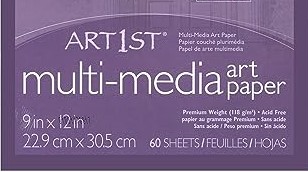
Mixed media paper is the perfect option for oil pastel artists experimenting with different materials. This type of paper is designed to handle a variety of mediums, making it well-suited for oil pastels.
The great thing about mixed media paper is its smooth surface, providing a good foundation for drawing with oil pastels.
This type of paper typically weighs 90-140 lb, making it sturdy enough to handle the pressure of blending and layering oil pastels.
Why Choose Mixed Media Paper?
Mixed media paper is ideal for artists who want to add depth and dimension to their oil pastel artwork.
Using Mixed Media Paper with Oil Pastels
When working with mixed media paper and oil pastels, it’s important to remember that this type of paper is not as textured as other papers so blending techniques may be different.
Artists may need a blending tool to create smooth transitions between colors. However, because mixed media paper is less textured, it may be easier to create detailed drawings.
Artists can use fine-pointed oil pastels to create intricate designs on this type of paper.
Mixed media paper is a great option for oil pastel artists experimenting with different materials and techniques. Its versatility makes it a popular choice among artists of all skill levels.
The Importance of Sanded Paper for Oil Pastels
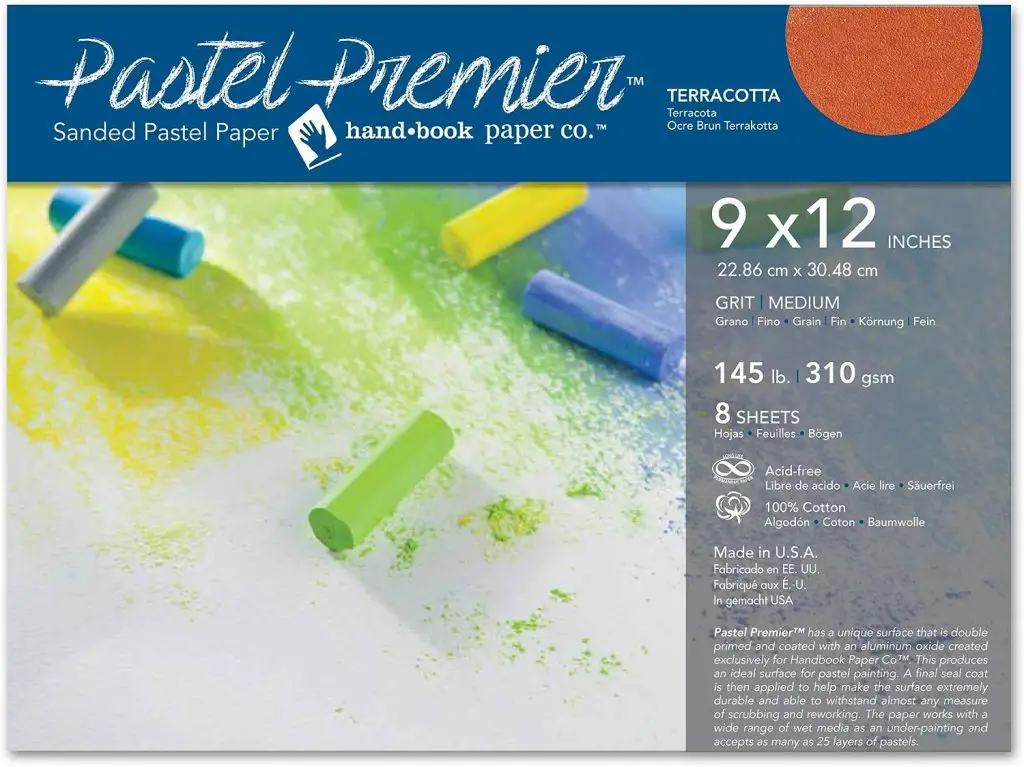
Sanded paper is a popular choice among many oil pastel artists. The rough texture of the paper allows for better adherence of layers of oil pastels and the blending of soft pastels for a unique effect.
Unlike traditional pastel paper, sanded paper has grit that provides a more abrasive drawing surface, allowing oil pastels to adhere better.
The texture of sanded paper comes in various grits, from fine to coarse. The grit size depends on the type of pastel work you plan to create and the effect you want to achieve.
A finer grit is more suitable for blending and layering, while a coarser grit is beneficial for creating texture and adding depth to the artwork.
When working with sanded paper, it’s important to layer the oil pastels gradually to avoid overloading the paper and disrupting the texture.
The grit of the paper can also cause the pastels to wear down quickly, so it’s important to have a good supply of oil pastels on hand.
Overall, sanded paper is an excellent choice for artists looking to create textured and layered oil pastel artwork. Its unique texture allows for better adherence and blending of the pastels, giving artists more control over the final result.
Exploring Other Suitable Paper Options for Oil Pastels
In addition to specialized oil pastel paper, other paper options can be used for your creations. Here are some additional paper options:
1. Sketch Paper
Sketch paper can be a good option if you start with oil pastels. It’s inexpensive and has a smooth surface that works well with oil pastels. However, sketch paper is usually not very thick, so it’s best for small drawings or sketches.
2. Mixed Media Paper
Mixed media paper is designed to handle a variety of art materials, including oil pastels. It has a heavier weight than sketch paper and can handle more layers of pastels. Mixed media paper is great for mixed media pieces that incorporate other materials.
3. Regular Paper
If you want to experiment, use regular paper for your oil pastel drawing. While it won’t provide the same texture as specialized paper, it can still work as a surface for oil pastels. However, you’ll need to be careful not to use too much pressure, or the paper will rip.
4. Watercolor Paper
Watercolor paper is another option for oil pastel artists. The texture of watercolor paper can give your oil pastel artwork an interesting, unique look. It’s also a great option to add watercolor or other water-based mediums to your artwork.
When exploring other paper options, remember that the paper’s texture and thickness will affect how your oil pastels adhere to the surface. Testing different papers and seeing which ones work best for your project is always a good idea.
Tips for Working with Oil Pastels on Different Types of Paper
Using oil pastels on different types of paper can produce different effects, and adjusting your technique is essential.
Here are some tips and techniques for working with oil pastels on a variety of paper types:
Watercolor Paper:
Watercolor paper is suitable for oil pastels, but the surface may require additional preparation. You can stretch the paper using water or a masking tape border to prevent the paper from buckling. Additionally, applying a layer of gesso can enhance the color vibrancy and texture.
Sanded Pastel Paper:
Sanded paper is ideal for creating unique, layered effects using oil pastels. When working with sanded paper, start with light colors, gradually building up layers with darker hues. Be sure to blend the pastels carefully to prevent the paper’s texture from becoming too dominant.
Mixed Media Paper:
Mixed media paper can provide a versatile surface for oil pastels, but it can be challenging to blend colors due to its lack of texture. To overcome this, use fixative between layers or apply a layer of gesso before creating a tooth surface.
Black Paper:
Using black paper with oil pastels can create a unique, striking effect. Light colors will stand out against the dark background, and the paper’s texture will enhance the artwork’s depth. However, be aware that the colors might not appear as vivid as they would on white paper.
Regular Sketch Paper:
Sketch paper can be used for oil pastels but will require additional preparation to create a tooth surface. Apply a fixative layer between layers to create a better surface that holds the pastels.
- Remember to adjust your technique according to the paper’s surface texture, with rougher surfaces requiring more blending to create a smooth finish.
- Work from light to dark, gradually building layers to create depth and dimension.
- Experiment with different paper types to discover your preferred method and which surfaces work best for your style of oil pastel work.
Finding the Best Paper for Oil Pastels: Reviews and Recommendations
Choosing the right paper for your oil pastels can significantly affect your artwork’s quality. To help you find the best paper for your needs, we have compiled a list of the top 9 best papers for oil pastels.
| Rank | Name | Features |
|---|---|---|
| 1 | Sennelier Oil Pastel Pad | Heavyweight paper with a pronounced texture is perfect for creating rich, layered oil pastel artwork. It comes in a variety of hues and is acid-free and pH-neutral. |
| 2 | Strathmore 400 Series Pastel Pad | Acid-free paper with a subtle texture that enhances the vibrancy of colors. Suitable for beginners and professionals alike. |
| 3 | Canson Mi-Teintes Pastel Pad | Textured paper with a high rag content allows for multiple pastel layers. It comes in a range of colors to suit different themes and moods. |
| 4 | Uart Sanded Pastel Paper | Rough, toothy surface that provides excellent grip for oil pastels. Ideal for creating detailed, textured artwork. |
| 5 | Strathmore 500 Series Mixed Media Paper | Heavyweight paper with a vellum surface that can handle a variety of media, including oil pastels. Features a white, acid-free, and lignin-free surface that resists yellowing over time. |
| 6 | Hahnemühle Velour Pastel Paper | Soft, velvety texture that adds depth and interest to oil pastel artwork. Resists smudging and fading. |
| 7 | Fabriano Tiziano Pastel Pad | Combines the best qualities of watercolor paper and drawing paper to create a versatile surface that works well for oil pastels. It offers a smooth surface that resists bleeding and smudging. |
| 8 | Canson XL Mix Media Paper Pad | Heavyweight paper that can handle wet and dry media, including oil pastels. It resists buckling and allows for a variety of techniques. |
| 9 | Stonehenge Aqua Watercolor Paper | Heavyweight paper that can handle wet and dry media, including oil pastels. It resists buckling and allows for a variety of techniques. |
While many of these papers could be a great choice for your oil pastel artwork, it’s important to consider your needs and preferences.
Some artists may prefer a paper with a rough texture, while others may prefer a smooth surface.
Mixed media paper may be the best choice for those who like experimenting with different techniques and media.
Choosing a high-quality oil pastel to pair with your paper is also important. High-quality oil pastels are softer and more pigmented, allowing for richer and more vibrant colors.
Your oil pastel artwork can reach new heights with the right paper and oil pastels. Experiment with different types of paper and techniques to find your ideal combination.
Final Thoughts on Best Paper for Oil Pastels
In conclusion, choosing the best paper for oil pastels is crucial for creating high-quality, vibrant artwork. By considering texture, durability, and thickness, artists can find the perfect paper to meet their needs.
We have explored various paper types suitable for oil pastels, including watercolor, pastel, sanded, and mixed media.
Each type has its own unique characteristics, making them suitable for different projects and skill levels.
Our top picks include Sennelier oil pastel paper and Strathmore 400 series pastel pad. Textured paper is ideal for creating depth and enhancing vibrancy, while black paper can add richness and intensity to colors.
Mixed media paper is versatile and can handle multiple layers of pastels, while the sanded paper is favored by many oil pastel artists.
Other paper options, such as sketch paper, multimedia paper, and even canvas, can also be used for oil pastels. The key is experimenting and finding what works best for each artist and project.
Investing in high-quality paper for oil pastels is worthwhile for any oil pastel artist. Using the best paper, artists can create artwork showcasing their talents.

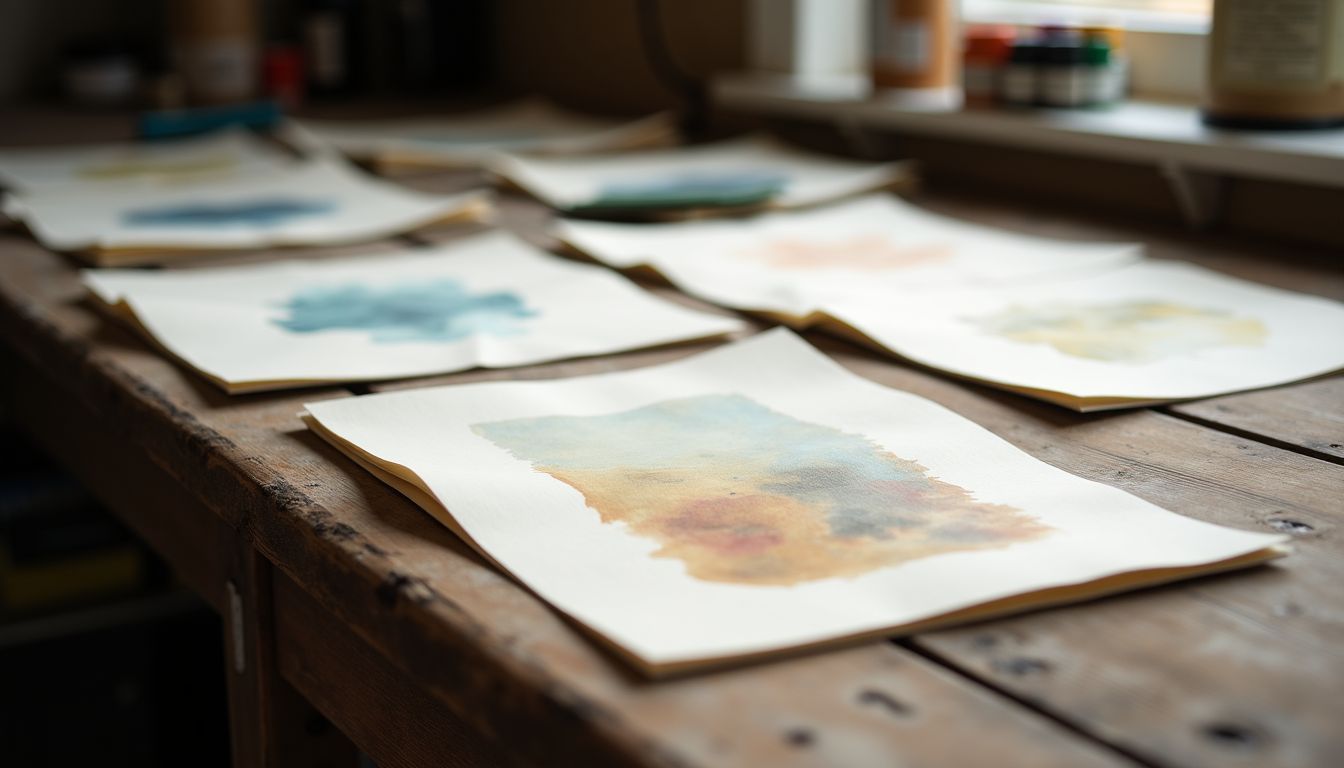

Leave a Reply